Science Fiction inspires many computer projects and they get turned into reality - here are some of my favorites.
Yes, I admit it I am a "hacker" in the old sense of the word that is Definition 4 = A person who is good at programming quickly. See Hackers Dictionary later in this blog.
I was thinking that there are certain books everyone in the computer industry is recommended to read before they can claim any level of computer expertise. If you have not read them, don't tell any one, and quickly get yourself a copy and read it quickly.
- Thumbnails are borrowed from Amazon - thanks guys and good to see all these important books are still available.
- From 2012 AIXpert blog
My top books that all computer people need to read
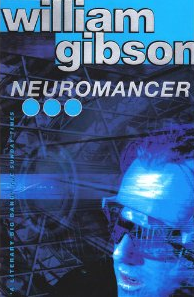 |
Neuromancer by William Gibson
One of the original cyber-punk books, which in 1984 predicted the modern Internet and cracking computers over the network with automated tools and some that are coming true now - 3 decades later.
I thought of this book while reading about the PowerSC Security tools and noticed one of them includes a reference to ICE. This book references to the same Intrusion Countermeasures Electronics (ICE) The "thanks to" in Neuromancer, attributed this term to Tom Maddox.
There is also, Black ICE, which includes an Artificial Intelligence mind that can, if necessary, kill the intruder. I am not clear if Black ICE kills the virtual person or the actual person.
I looked around for Black-ICE on the Internet and found a company with such a product name and guess who now owns it!
IBM withdrew the firewall product with this name a few years ago. Perhaps, due to the Neuromancer connection.
Don't get this book title confused with the word Necromancer.
|
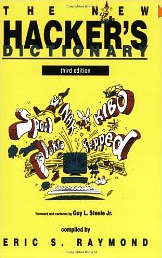 |
The New Hackers Dictionary by Eric Raymond
A fun book to read a page or two "now and again" or read cover to cover. Who knew computers were so much fun?
Take a look at the definition of "hacker" = originally "one that makes furniture with an axe".
I am still proud to be a hacker in the original computer sense and it is nothing to do with cracking into computers.
I laughed at the term "IBM discount". Twenty years later and working for IBM, I realized it was true. It means a price increase. Buy a second-hand copy for a better "beaten up" look and extra street-cred points and save 20 bucks.
No idea if the updated later edition is any good.
|
 |
The Soul of a New Machine by Tracy Kidder
A fascinating account of the development of a new mini computer at Data General (you know that a mini computer has multiple boards to make up the actual CPU). This book includes great fun and inter-team rivalry like the renaming of one development teams files to include a full stop at the front. I am sure that I don't need to tell you what happens when the user tries to list their files in the morning, right?
It includes the "fight to the death" competition across the computer industry main players - what happened to Data General in the end?
Probably the same as Pyramid, MIPS, Norsk Data, DEC, Sun and all the others down through the decades.
Winner of the Pulitzer Prize and the American Book Award.
|
 |
The Mythical Man-Month and Other Essays on Software Engineering By Frederick P. Brook Jr.
The story of IBM betting the whole company on the creation of OS/360. Lots of insightful thoughts on common mistakes and how large projects can go wrong with bad thinking.
The Mythical Man-month is based on the idea that if a woman takes 9 months to make a baby then 9 women can make a baby in just one month! That rule is wrong but thinking this way is why many managers desperately trying to get software finished sooner by throw more people at the problem and make the problem worse. It covers why writing generic software for a range of machines and various sizes (instead of a single machine) is nine times harder and not the expected twice or three times.
I read this book many years ago. I would read the new edition with extra thoughts.
|
 |
Lions' Commentary on UNIX with Source Code by John Lions
If you can read C source code (even if you can't write it yourself), then this book was an exciting find. It is the actual source code for UNIX in the days when it was small enough that one person could read and understand the whole thing UNIX Kernel. And I mean every line of code. It includes the tiny bit of assembler that UNIX needs to do the actual changing of registers for virtual memory, process context switch, and user to kernel mode switches. All the code is explained by John Lions notes. I owned a prized 4th generation photocopy of the original University Course hand-out ... until I found everyone could buy a copy. It is the UNIX 6th Edition, so old, but all of the UNIX kernel is there. Don't forget Brian Kernighan and Dennis Richie (K & R) wrote the C compiler (another great book C Programming Language) and Dennis Richie and Ken Thompson wrote the UNIX Kernel, so the code here is an advanced class in design and coding style.
For an extreme view: I don't understand how any one can use UNIX without being a C programmer :-)
|
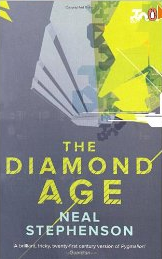 |
The Diamond Age by Neal Stephenson
A great book about life in the future and part of it covers an uneducated poor girl given a special book that transforms her life.
I decided that it is better to watch someone use a product "hands-on" and explain it as they go. The videos include what and why they do things that way. Much better than endless manuals and "death by PowerPoint" presentations. It is more of a conversation and story. This story approach is used by the special book in The Diamond Age to educate the girl.
OK, the book does get a little "mushy" two-thirds of the way in but it is interested in covering an extreme 3D printer technology that we are starting to see today. Look at the Raspberry Pi cases available - the first cases available were using 3D models ready for a 3D printer. Regular cases took 3 months longer to become available.
|
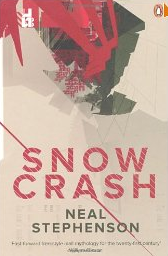 |
Snow Crash by Neal Stephenson
Wow!!! What a start to the book - it changes the way that you think about extreme pizza delivery, swimming pools, burbclaves, and levitating skateboards quite the same way again. Nor forget the main character names of Hiro Protagonist and Vitality Chernobyl for their impact. Snow Crash is the pattern that you get on a screen once the computer failed and "oh no" the pattern is not so random after all as it taps into your mind and effecaffects thinking.
In Snow Crash, the heroes have a life and a virtual life too that get strangely mixed up and they life in a world rich in new technology and terms and vocabulary. The story and technology is vivid. I think the world is reading this book and trying to catch up with its vision and trying to develop it.
The word on the street is the guys at Second Life read this book and said "OK, let us do that and build it". And they did! Now the focus is on "meta" - the same thing again but in 3D
The future in this book could easily be the future we all see.
|
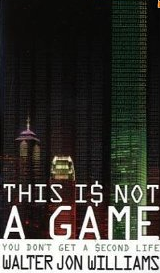 |
This is Not a Game by Walter Jon Williams
Another near future book but this one could happen this year. It is a murder mystery techno-thriller where the people involved are fed up with the slow results of the police investigation to figure what happened when their friend died. So they harness the resources they have available to them. They are an Internet gaming company running a semi-real life, semi online problem-solving game.
If a dozen cops can't solve the clues - what about 12 million Internet users' research skills, imagination and ability to follow every possible avenue? What about a million webcams and thousands of people that can give you an hour or two to help out.
It is only a matter of time before this problem happens for real.
|
|
|
Other places to find content from Nigel Griffiths IBM (retired)
[{"Business Unit":{"code":"BU058","label":"IBM Infrastructure w\/TPS"},"Product":{"code":"SWG10","label":"AIX"},"Component":"","Platform":[{"code":"PF002","label":"AIX"}],"Version":"All Versions","Edition":"","Line of Business":{"code":"LOB08","label":"Cognitive Systems"}},{"Business Unit":{"code":"BU054","label":"Systems w\/TPS"},"Product":{"code":"HW1W1","label":"Power -\u003EPowerLinux"},"Component":"","Platform":[{"code":"PF016","label":"Linux"}],"Version":"All Versions","Edition":"","Line of Business":{"code":"","label":""}}]







